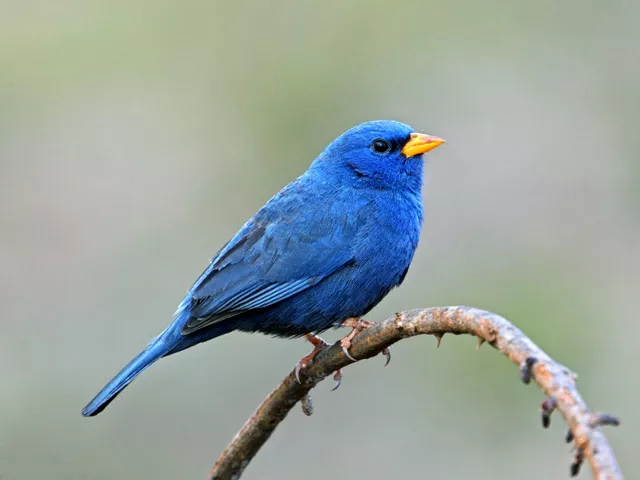Blue Finches and Indigo Buntings are two strikingly beautiful songbirds that grace the North American landscape. With their vibrant blue plumage, these birds often captivate birdwatchers and nature enthusiasts. In this article, we will explore the differences between the Blue Finch and the Indigo Bunting, shedding light on their appearance, habitat preferences, and behavioral characteristics.
Physical Characteristics:
The first and most obvious difference between the Blue Finch and Indigo Bunting is their physical appearance. While both birds have bright blue feathers, they differ in shades and patterns. The male Indigo Bunting has striking indigo-blue feathers all over its body with black wings and tail. On the other hand, the male Blue Finch has lighter blue feathers on its head, back, and wings, while its belly and chest are a rusty red color. The female Blue Finch is brownish-gray with blue-tinged wings and tail, while the female Indigo Bunting is a duller shade of brown with a faint blue tinge.
Another way to distinguish between the two birds is by their size and shape. The Indigo Bunting is slightly larger than the Blue Finch, measuring around 5-6 inches in length, while the Blue Finch is around 4.5-5 inches long. The Indigo Bunting also has a stockier build with a thicker beak, while the Blue Finch has a slimmer build with a more pointed beak.
Habitat and Range:
The Blue Finch and Indigo Bunting also differ in their habitat preferences and ranges. The Indigo Bunting is found across North America, from southern Canada to northern Mexico, during breeding season. During the winter months, they migrate south to Central and South America. This bird prefers open woodlands, brushy fields, and edges of forests, especially those near water sources.
The Blue Finch, on the other hand, is found in South America, specifically in Venezuela, Colombia, Ecuador, Peru, Bolivia, and Brazil. They inhabit humid forests, forest edges, and clearings with dense vegetation. They are also sometimes found in coffee plantations and gardens.
Behavior and Vocalizations:
Both Blue Finches and Indigo Buntings are known for their melodious songs, which play a vital role in attracting mates and establishing territories. The songs of the Blue Finch consist of a series of rich, warbling notes, while the Indigo Bunting’s song is a distinctive, clear, and high-pitched series of musical phrases.
Blue Finches are known for their acrobatic feeding behavior, particularly their ability to twist and contort their bodies to access seeds from conifer cones. Indigo Buntings, on the other hand, exhibit a more relaxed foraging style, often perching on branches or vegetation while searching for insects, seeds, and berries.
Migration Patterns:
Blue Finches are primarily resident birds within their range, while some individuals may engage in localized seasonal migrations, depending on food availability. In contrast, Indigo Buntings undertake remarkable migratory journeys. During the breeding season, they inhabit the eastern and central parts of North America. As the season ends, they embark on a lengthy migration southward, reaching Central America and northern South America for the winter. Their vibrant blue plumage is a sight to behold during their migration.
Conservation Status:
Both Blue Finches and Indigo Buntings are considered species of least concern in terms of conservation status. However, their populations may face localized threats due to habitat loss, pesticide use, and climate change. Preserving their preferred habitats, including open woodlands, grasslands, and riparian areas, is crucial to maintaining healthy populations of these captivating birds.
Conclusion:
In summary, while the Blue Finch and Indigo Bunting may look similar at first glance, they are distinct species with unique physical characteristics, behaviors, and habitats. By learning how to distinguish between these two birds, you can appreciate their beauty and understand their role in their respective ecosystems. Additionally, it’s important to be aware of their conservation status and take steps to protect their habitats for future generations to enjoy.
Related topics:
What does a Blue Finch look like?
What do Blue Finches eat?
Where Do Blue Finches Live?


 Facebook
Facebook  Instagram
Instagram  Youtube
Youtube 